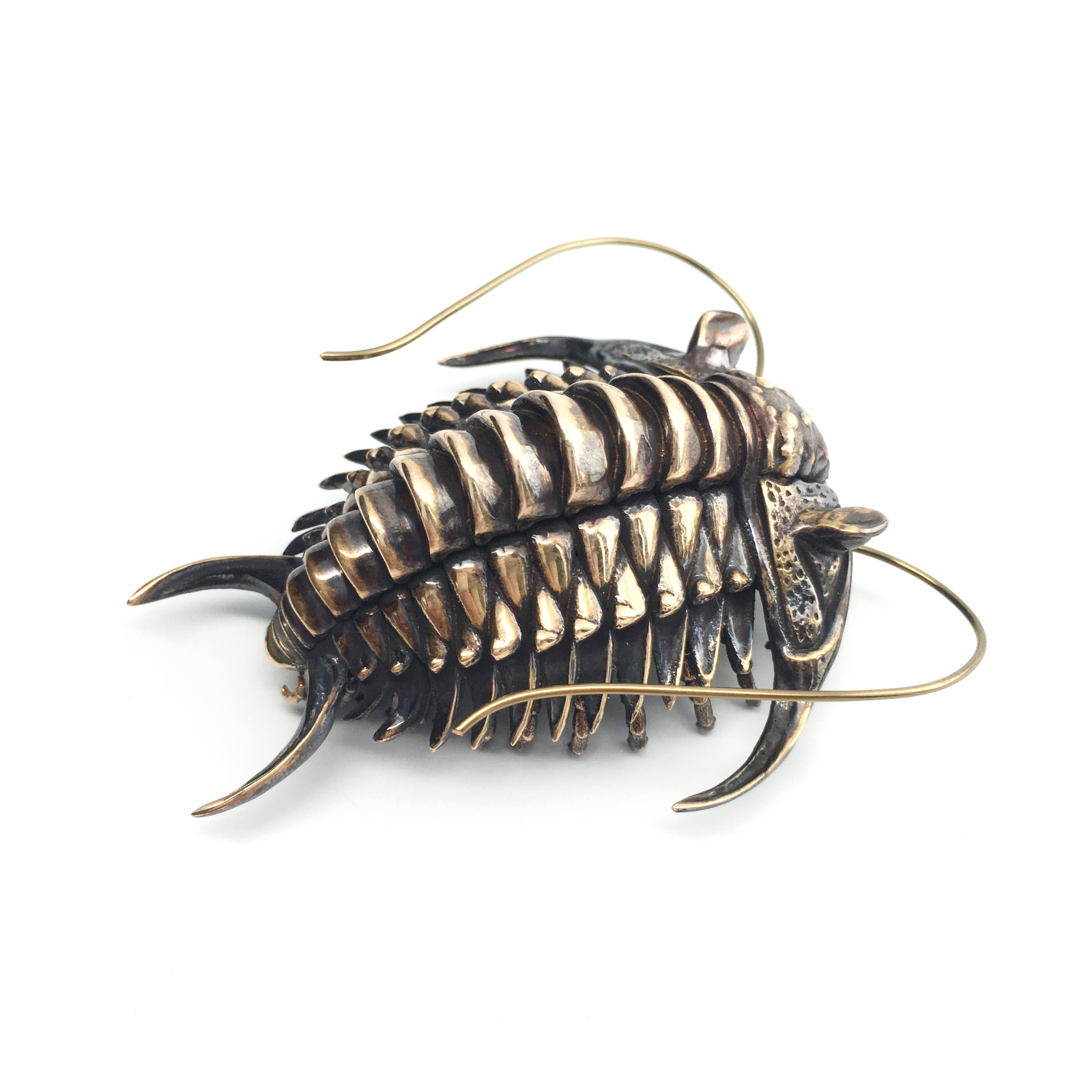Ceraurus reconstruction

A solid-bronze reconstruction of a Ceraurus-species trilobite, designed using intimate knowledge of the scientific literature.
Trilobites swarmed shallow seas from half a billion to 250 million years ago. Their tough sclerites (exoskeleton shells) can be found fossilized in rocks on every continent. But very rarely, for a handful of species, conditions conspired to preserve more delicate parts: endopods (walking legs), exopods (gills), and antennae. One of these species, the Ordovician-period trilobite Ceraurus pleurexanthemus, became the focus of intense studies by the Norwegian paleontologist Leif Størmer, who worked on specimens collected from the famous Walcott-Rust quarry in New York. The specimens were collected by Charles Doolittle Walcott himself, best known for his discovery of the Burgess Shale fossils.
The solid bronze animal combines Størmer’s detailed studies, digital design tools, and a combination of hypermodern and several-thousand-year-old production methods (3D printing, lost-wax casting, wire bending and grinding, patination with liver of sulfur, and polishing). It’s on the large end of life-sized, a clear member of the Ceraurus species group, with profound similarities to Ceraurus pleurexanthemus, while displaying longer eyestalks and a more curved body. Each of these features, however, falls well within the range of natural morphological variation across species. The ventral (underside) details—endopods and exopods—closely follow Størmer’s painstaking work, and rank among the most accurate life-size reconstructions ever created.